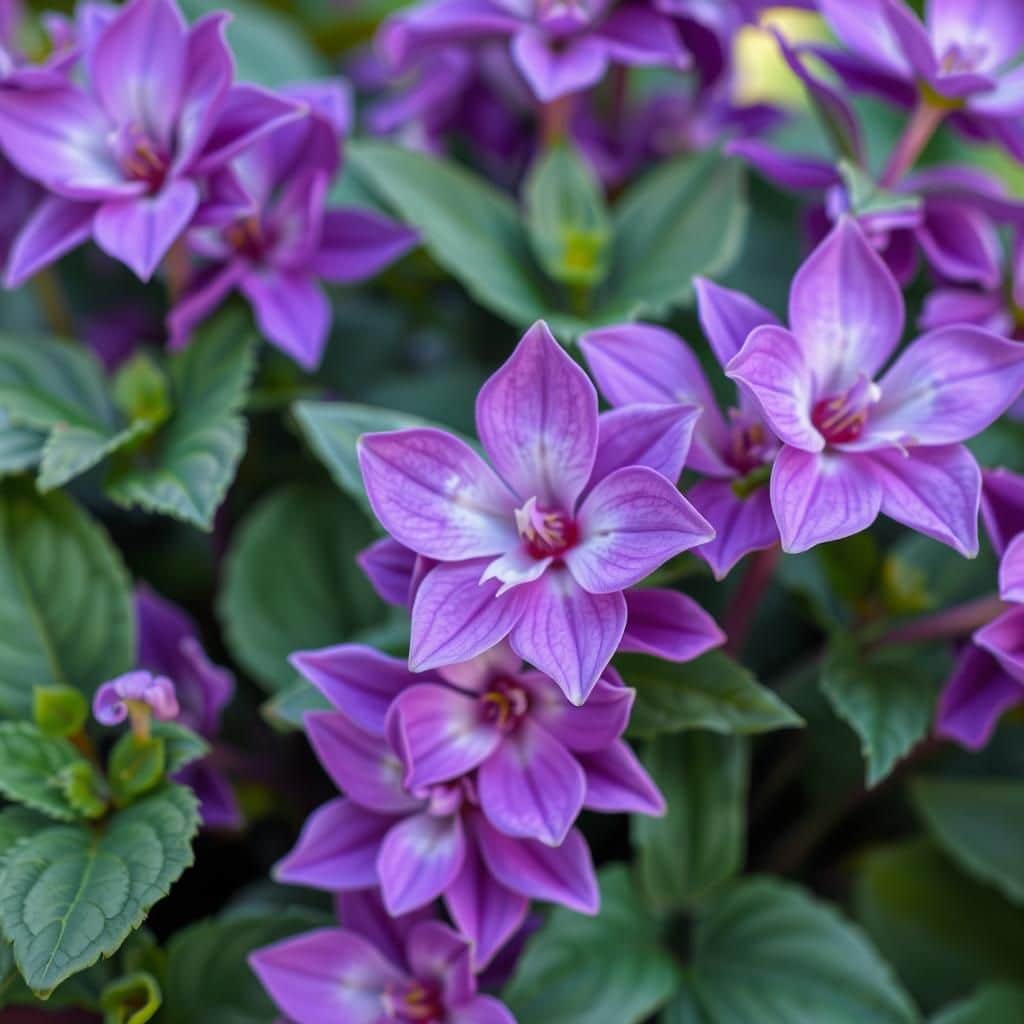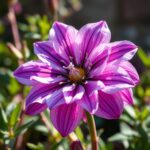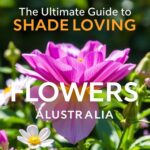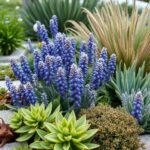Top 10 Beautiful Plants That Require Full Shade for Your Garden

Creating a beautiful garden in shaded areas can be a rewarding challenge. While many people assume that lush greenery and vibrant blooms can only thrive in full sunlight, there are numerous stunning plants that flourish in full shade. In this article, we will explore the top 10 beautiful plants that not only tolerate but truly thrive in low-light environments. From striking foliage to enchanting flowers, these selections will help you transform your shaded garden spaces into a serene and colorful oasis. Discover the charm and diversity of these shade-loving plants that can elevate the aesthetic of any garden.
Plants That Require Full Shade
Many gardeners struggle to find suitable plants for the full shade areas of their gardens, where sunlight is minimal for most of the day. Fortunately, there are numerous species that thrive in these conditions, providing lush greenery and beautiful blooms even when sun-loving plants cannot survive. Some of the best options include ferns, hostas, and astilbes, each capable of adding vibrancy and texture to the shaded spots. When selecting plants for full shade, it’s important to consider not only the light requirements but also the soil type, moisture levels, and the overall climate, ensuring that the chosen plants will flourish in their designated environment.
Types of Plants Suitable for Full Shade
There are various types of plants that thrive in full shade, catering to different landscaping needs and preferences. For example, ferns are renowned for their lush foliage and resilience in shady areas, making them an excellent choice for ground cover. Similarly, hostas offer a wide variety of leaf shapes and colors, enhancing any garden’s visual appeal. Other plants that prosper in low light conditions include heucheras and astilbes, both of which bring a delightful assortment of colors and textures to shaded woodland gardens.
Benefits of Full Shade Plants
Utilizing plants that require full shade can provide several advantages for gardeners. These plants often require less maintenance than sun-loving varieties, as they are adapted to thrive in lower light levels and may be more drought-resistant once established. Furthermore, these plants can help to create a serene and tranquil environment in the garden, serving as a natural backdrop for more vibrant flowering species. They also provide shelter for wildlife and contribute to the overall biodiversity of the garden ecosystem.
Care Tips for Plants in Full Shade
Caring for plants in full shade presents its own set of challenges and rewards. To ensure healthy growth, it’s vital to assess the soil quality, as many shade-loving plants prefer rich, well-draining soil that can retain adequate moisture. Regular mulching not only helps to maintain soil temperature but also suppresses weeds, allowing the shade plants to thrive. Additionally, monitoring for pests and diseases is crucial, as certain fungal outbreaks can be more prevalent in shady conditions.
See also:
Common Mistakes When Choosing Shade Plants
One common mistake gardeners make is assuming that all shade plants can thrive in deep, dark shade. In reality, some shade-tolerant plants still require dappled light or can adapt to slightly sunnier spots. It’s also erroneous to neglect the water requirements of shade plants, assuming they won’t need regular irrigation. Another oversight is planting too closely, which can lead to competition for nutrients and poor growth. Understanding the specific needs of each plant species is essential for a thriving shade garden.
Designing a Full Shade Garden
When designing a full shade garden, it’s crucial to focus on layering and textural contrast to create visual interest. Start with taller plants like ferns or indigofera at the back, then layer in medium-sized plants such as hostas and heucheras, followed by ground covers like vinca or ivy. Incorporating various leaf shapes, sizes, and colors can help to prevent the garden from appearing sparse or dull. Additionally, consider the seasonal aspect of the plants selected, as some may add vibrancy in spring while others shine in autumn, providing year-round appeal.
| Plant Name | Light Requirement | Water Needs |
|---|---|---|
| Ferns | Full Shade | Moderate |
| Hostas | Partial to Full Shade | Moderate to High |
| Astilbes | Full Shade | High |
| Heucheras | Partial Shade | Low to Moderate |
| Vinca | Full Shade | Moderate |
Expert Tips for Choosing and Caring for Shade-Loving Plants
When selecting plants that thrive in full shade, it's crucial to consider their specific light, soil, and moisture requirements to ensure they flourish in your garden. Opt for varieties that not only enhance the beauty of shaded areas but also complement the ecosystem of your garden by attracting beneficial pollinators and providing habitat for local wildlife. Pay attention to the growth habits of these plants, as some may spread more aggressively than others and could require maintenance to keep them in check. Additionally, incorporating a mix of textures and colors can create a visually interesting space even in dimly lit areas.
Understanding the Different Types of Shade
Different types of shade exist based on the amount of direct sunlight a garden area receives. These can be categorized as full shade, where sunlight is virtually absent all day, and partial shade, which receives indirect sunlight for a portion of the day. Knowing the specific conditions of your garden will help you choose the right plants that can thrive under such varied lighting scenarios. Always consider factors like overhanging branches and surrounding structures that could impact light levels in your shaded areas.
Top 10 Shade-Loving Plants to Consider
In your quest for beautiful plants that flourish in full shade, consider options such as hostas, ferns, and astilbes. Hostas are renowned for their lush foliage, while ferns add a delightful textural contrast with their delicate fronds. Astilbes produce stunning flower plumes, making them a great addition for pops of color in your garden. Other noteworthy choices include heuchera for vibrant leaves and brunnera with charming spring blooms. Each plant brings its unique characteristics, allowing for versatile combinations in shaded spaces.
See also:
Maintenance Tips for Shade Plants
Caring for shade plants often requires different strategies than their sun-loving counterparts. Ensure they receive adequate moisture, as shaded regions may retain water differently, sometimes leading to overly wet conditions or, conversely, dryness if surrounded by thirsty trees. Regularly check for pests and diseases, particularly since the cool, damp environment can sometimes harbor unwanted problems. Mulching around the base of these plants can help retain moisture while suppressing weed growth, making maintenance more manageable.
Benefits of Shade Plants in Your Garden
Integrating shade-loving plants into your garden offers numerous benefits beyond aesthetic appeal. They can help prevent soil erosion on slopes and improve air quality by acting as natural air filters. Additionally, they provide a vital habitat for various wildlife species, including birds, insects, and beneficial critters that can aid in pollination. Establishing a thriving ecosystem with shade plants contributes to a more sustainable garden environment, promoting biodiversity while maintaining the beauty of shaded areas.
Combining Shade Plants with Hardscaping Elements
Utilizing hardscaping elements such as pathways, patios, or stone features can enhance the visual appeal of your shade garden. Incorporating these components into your landscape design not only creates interest but also offers a contrasting backdrop for the lush foliage of shade-loving plants. Consider using natural stones or paving materials that blend with the surrounding environment, ensuring that your hardscaping complements the overall aesthetic. Strategically placed benches or decorative focal points can invite leisurely enjoyment of the tranquil space you've created with your shade plants.
Questions from Our Readers
What are some examples of plants that require full shade?
Many plants thrive in full shade and are perfect for low-light areas. Some popular examples include hostas, ferns, astilbes, and bamboo. These plants typically have adapted to lower light conditions, making them ideal for gardens or landscapes with limited sunlight.
How much sunlight is considered full shade?
Full shade generally means that a plant receives less than 3 hours of direct sunlight each day. These areas may be located under thick canopies, buildings, or other structures that block out most light, requiring shade-loving plants to thrive.
See also:
Can I grow vegetables in full shade?
Growing vegetables in full shade can be challenging, but some varieties can tolerate these conditions. Leafy greens such as spinach, lettuce, and arugula are among the best options, as they can still grow well with minimal sunlight.
How do I care for plants that require full shade?
Caring for shade-loving plants involves ensuring that they get the right nutrients and moisture without saturating the soil. Regularly checking for signs of disease or pests is crucial, as some shade plants can become susceptible to problems due to high humidity and low light conditions.

If you want to read more articles like Top 10 Beautiful Plants That Require Full Shade for Your Garden, we recommend you check out our Landscaping category.
Leave a Reply
Related Articles